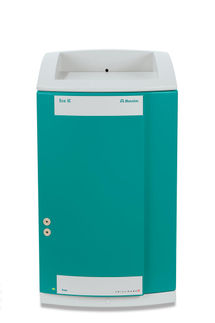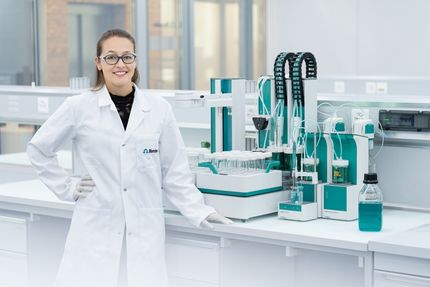Acyl-CoA:cholesterol acyltransferase
Class and Structure
Acyl-CoA cholesteryl acyl transferase EC 2.3.1.26, more simply referred to as ACAT, belongs to the class of enzymes known as acyltransferases. The role of this enzyme is to transfer amino-acyl groups from one molecule to another. ACAT is an important enzyme in bile acid biosynthesis.
In nearly all mammalian cells, ACAT catalyzes the intracellular esterification of cholesterol and formation of cholesterol esters. The esterification of cholesterol mediated by ACAT is functionally significant for several reasons. ACAT-mediated esterification of cholesterol limits its solubility in the cell membrane lipids and thus promotes accumulation of cholesterol ester in the fat droplets within cytoplasm; this process is important because the toxic accumulation of free cholesterol in various cell membrane fractions is prevented. Most of the cholesterol absorbed during intestinal transport undergoes ACAT-mediated esterification before incorporation in chylomicrons. In the liver, ACAT-mediated esterification of cholesterol is involved in the production and release of apoB-containing lipoproteins. ACAT also plays an important role in foam cell formation and atherosclerosis by participating in accumulating cholesterol esters in macrophages and vascular tissue. The rate-controlling enzyme in cholesterol catabolism, hepatic cholesterol 7-hydroxylase, is believed to be regulated partly by ACAT.1
Mechanism
The mechanism scheme is as follows:
Acyl-CoA + Cholesterol ←→ CoA + Cholesterol ester2
ACAT-1 and ACAT-2
There are two isoforms of ACAT that have been reported to date: ACAT-1 and ACAT-2. ACAT-1 is characterized by its ubiquitous presence in tissues with the exception of the intestine, where ACAT-2 is prevalent. The different isoforms are also associated with different pathologies associated with abnormalities in lipid metabolism.3
ACAT-1
Previous studies have shown that ACAT modulates proteolytic processing in cell-based and animal models of Alzheimer's disease. A follow-up study reports that ACAT-1 RNAi reduced cellular ACAT-1 protein and cholesteryl ester levels while causing a slight increase in free cholesterol content of endoplasmic reticulum membranes. The data also showed that a modest decrease in ACAT activity led to suppressive effects on Abeta generation.3
ACAT-2
In a recent study, it was shown that ACAT-2 activity is upregulated as a result of chronic renal failure. This study was specific to hepatic ACAT, which plays a major role in hepatic production and release of very low density lipoprotein (VLDL), release of cholesterol, foam cell formation, and atherogenesis.3
In another study, non-human primates revealed a positive correlation between liver cholesteryl ester secretion rate and the development of coronal artery atherosclerosis. The results of the experiment are indicative that under all of the conditions of cellular cholesterol availabilty tested, the relative level of ACAT-2 expression affects the cholesteryl ester content, and therefore the atherogenecity of nascent apoB-containing lipoproteins.4
Yeast
In yeast Acyl acyl-CoA:sterol acyltransferase (ASAT) is functionally equivalent to ACAT. Although studies in vitro and in yeast suggest that the acyl-CoA binding protein (ACBP) may modulate long-chain fatty acyl-CoA (LCFA-CoA) distribution, the physiological function in mammals is unresolved. Recent research suggests that ACBP expression may play a role in LCFA-CoA metabolism in a physiological context.5
In Saccharomyces cerevisiae, the accumulation of ergosteryl esters accompanies entry into the stationary phase and sporulation. Researchers have identified two genes in yeast, SAT-1 and SAT-2, that encode for the different isozymes of ASAT. In yeast, SAT-1 is the major catlytic isoform. Mitotic cell growth and spore germination are not compromised when these genes are deleted, but diploids that are homozygous for a SAT-1 null mutation exhibit a decrease in sporulation efficiency.6
Plant Synthesis of Steryl Esters
In plants cellular sterol ester synthesis is performed by an enzyme different from mammalian ACAT and yeast ASAT; it is performed by Phospholipid:Sterol Acyltransferase (PSAT). A recent study shows that PSAT is involved in the regulation of the pool of free sterols and the amount of free sterol intermediates in the membranes. It is also described to be the only intracellular enzyme discovered as of yet that catalyzes an acyl-CoA independent sterol ester formation. PSAT is therefore considered to have a similar physiological function in plant cells as ACAT in animal cells.7
References
1. Katsuren, K, et al. "Structure of the human acyl-CoA:cholesterol acyltransferase-2 (ACAT-2) gene and its relation to dyslipidemia." Biochimica et Biophysica Acta. 1531 (Apr. 2001): 230-40.
2. "REACTION: R01461." KEGG Encyclopedia. 26 Apr. 2007 .
3. Temel, RE, et al. "ACAT2 stimulates cholesteryl ester secretion in ApoB-containing lipoproteins." Journal of Lipid Research (Apr. 2007). 23 Apr. 2007 .
4. Huttunen, HJ, C Greco, and DM Kovacs. "Knockdown of ACAT-1 reduces amyloidogenic processing of APP." FEBS Letter 581 (2007): 1688-92.
5. Huang, H, et al. "Acyl-coenzyme A binding protein expression alters liver fatty acyl-coenzyme A metabolism." Biochemistry 44 (Aug. 2002): 10282-97.
6. Yu, C, et al. "Molecular cloning and characterization of two isoforms of Saccharomyces cerevisiae acyl-CoA:sterol acyltransferase." Journal of Biological Chemistry 271 (Sept. 1996).
7. Banas, Antoni, et al. "Cellular Sterol Ester Synthesis in Plants Is Performed by an Enzyme(Phospholipid:Sterol Acyltransferase) Different from the Yeast and Mammalian Acyl-CoA:Sterol Acyltransferases." Journal of Biological Chemistry 80.41 (Oct. 2005): 34626-34634.
|







